
LGBTQ+ pride flags explained

When we’re talking about flags that represent the LGBTQ+ community, the rainbow flag is probably the first image that comes to mind. The rainbow flag is one of the most recognisable flags in the world and can be found at LGBTQ+ events and venues, as well as on many other items, like shoes, pins, bags, shirts, bracelets, pillows and much, much more. However, did you know there are actually a wide range of pride flags that represent different gender identities and sexual orientations? Do you know what all the rainbow colours represent and what the other pride flags symbolise? Let’s find out!
A symbol of hope
Gilbert Baker
Before the pride flag was created, the gay community was represented by a different symbol: the pink triangle. However, because of the dark history behind it (homosexuals were forced to wear a pink triangle during World War II), American activist Gilbert Baker started looking for an alternative in 1978. Something that symbolised hope and liberation. Something that could be worn with pride and wasn’t associated with oppression and humiliation.
“Something that symbolised hope and liberation.”
In his memoir Rainbow Warrior, Baker explains why he chose a rainbow. At a night out at the Winterland Ballroom in San Francisco, he noticed the hugely diverse crowd and the beautiful display of colours. “Dance fused us, magical and cleansing. We were all in a swirl of color and light. It was like a rainbow. A rainbow. That’s the moment when I knew exactly what kind of flag I would make.”
Changes and updates

Over the years, the rainbow flag has gone through several changes and updates. Gilbert Baker’s original rainbow flag consisted of eight different colours: hot pink, red, orange, yellow, green, turquoise, indigo, and violet. Baker assigned a special meaning to each colour.
- Hot pink: sex
- Red: life
- Orange: healing
- Yellow: sunlight
- Green: nature
- Turquoise: magic/art
- Indigo: serenity
- Violet: spirit
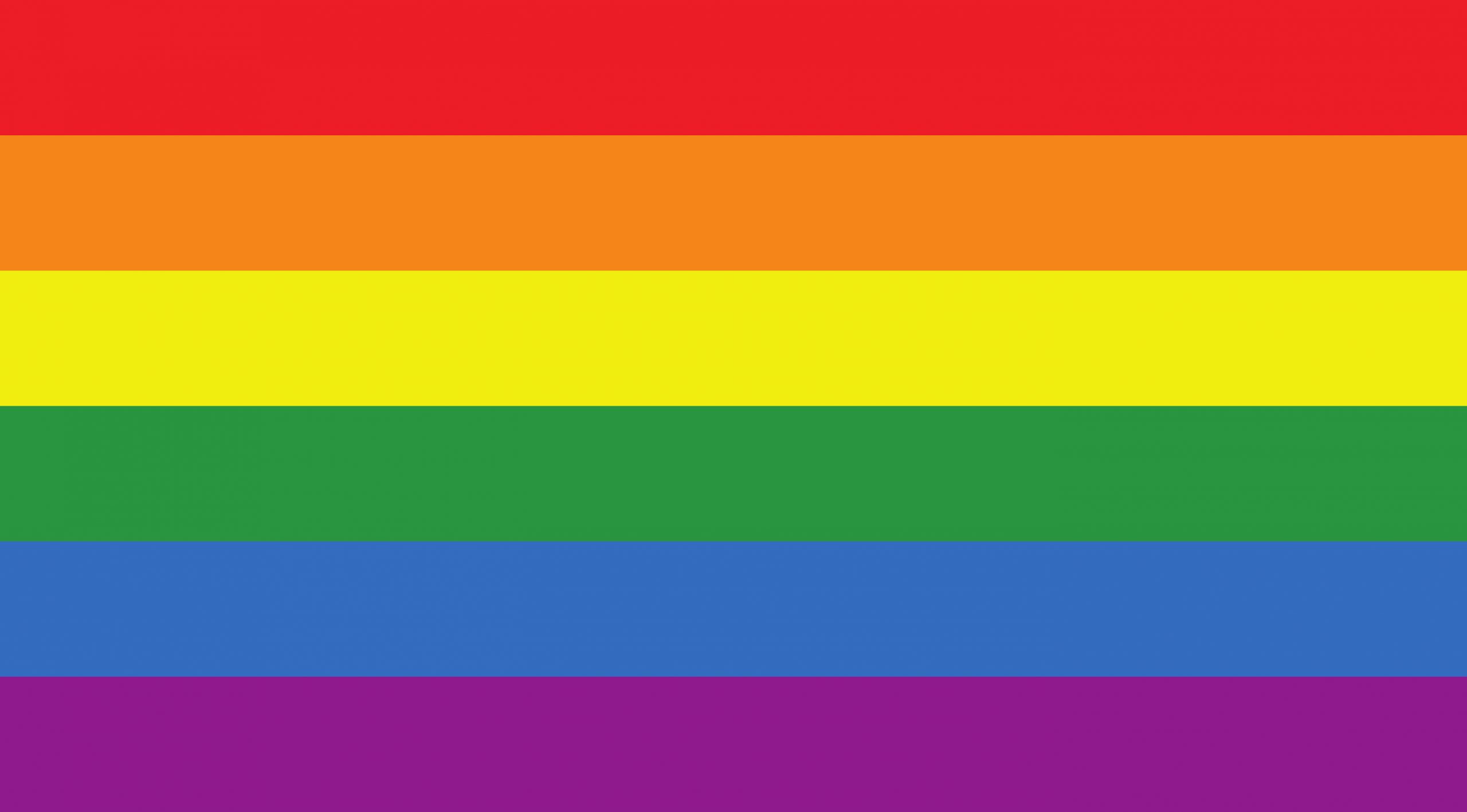
Hot pink dye was hard to come by however and the rainbow flag quickly became so popular that Baker decided to remove the hot pink stripe from the flag. Later, the turquoise stripe was removed as well and indigo changed to blue in order to make mass production easier. The result was the six-colour rainbow flag as we know it today. These are the current meanings behind the colours of the flag:
- Red: life
- Orange: healing
- Yellow: sunlight
- Green: nature
- Blue: harmony
- Violet: spirit
The Progress Pride Flag

 In 2017, a new version of the rainbow flag was created with a black and a brown stripe at the top, representing people of colour in the LGBTQ+ community. One year after that it was updated again. A triangle was added to the left of the flag with light blue, soft pink and white stripes to represent the transgender community. This flag is commonly referred to as the Progress Pride Flag.
In 2017, a new version of the rainbow flag was created with a black and a brown stripe at the top, representing people of colour in the LGBTQ+ community. One year after that it was updated again. A triangle was added to the left of the flag with light blue, soft pink and white stripes to represent the transgender community. This flag is commonly referred to as the Progress Pride Flag.
Intersexuality

In 2021, the Progress Flag was modified to include intersexuality. A purple circle on a yellow background was added to the left of the triangle. The purple and yellow represent gender-neutrality and the circle stands for wholeness, completeness and intersex people’s potential.
Other pride flags
Even though the rainbow flag is intended to represent the entire LGBTQ+ community, there are also many flags that represent a specific part of the community. There’s a flag for the lesbian, transgender, pansexual, bisexual, genderfluid, non-binary and asexual communities for example, and there are many more. There’s also a flag that represents straight and cisgender people who support the LGBTQ+ community, which is known as the ally flag. Below is an overview of the most common pride flags and what they stand for. Keep in mind that this is just a small selection of all pride flags that are in existence today. There are many more genders, identities, sexual preferences and subcultures with their own pride flag.
Lesbian pride flag

There are several different versions of the lesbian pride flag, but the one with nine stripes in different shades of red, orange, purple and pink with a white stripe in the middle is the most current version (2018). It is meant to represent the large variety of lesbian identities. However, there is still an ongoing debate regarding inclusivity and representation in the flag.
Bisexual pride flag

Bisexuality means sexual attraction to both males and females. The bisexual pride flags consists of two wide stripes and a smaller one in the middle. Pink represents attraction to the female gender, blue represents attraction to the male gender and the purple stripe in the middle is a mix of those two colours.
Transgender pride flag
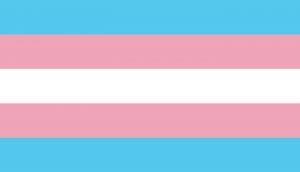
Transgender people don’t identify with the sex they were assigned at birth. Some transition to a different gender, some don’t. There are also transgenders who identify as non-binary or genderqueer. The transgender flag consists of blue and pink stripes, representing the male and female gender, as well as a white stripe, representing gender-neutral people and people who are transitioning.
Pansexual pride flag
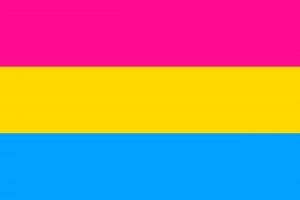
Pansexual people are attracted to people regardless of the gender they identify with. The pink and blue stripes of the pansexual pride flag represent attraction to people who identify as female or male. The yellow stripe represents attraction to people who identify as non-binary, genderqueer, androgynous, agender or don’t identify with the male or female genders in another way.
Asexual pride flag

Asexual people don’t or hardly feel any sexual attraction to other people. Some do feel romantic attraction to other people, while others don’t. The asexual pride flag consists of four stripes. Black represents asexuality, gray represents gray-asexuality (between sexual and asexual) and demisexuality, white represents non-asexuality and allies, and purple represents community.
Aromantic pride flag

Aromantic people don’t or hardly feel any romantic attraction to other people. Some do feel sexual attraction to other people, while others don’t. The two green stripes in the aromantic pride flag represent aromanticism, meaning people who don’t experience romantic attraction, white represents platonic attraction and gray and black represent the spectrum of sexuality, meaning both sexual and non-sexual attraction.
Demisexual pride flag

Demisexual people need to have a deep emotional connection to a person before they’re able to experience sexual attraction. The demisexual pride flag has the same colours as the asexual pride flag because demisexuality is on the asexual spectrum.
Non-binary pride flag

Non-binary people don’t identify with either male or female gender. The non-binary pride flag has four stripes representing people outside of the gender binary (yellow), people who identify with multiple genders (white), people with mixed genders (purple) and agender people (black).
Genderfluid pride flag

Genderfluid people don’t have a set gender, but move from one gender identity to the next. The genderfluid pride flag consists of five stripes. From top to bottom, they represent femininity (pink), no gender (white), a mix of femininity and masculinity (purple), all genders (black) and masculinity (blue).
Genderqueer pride flag
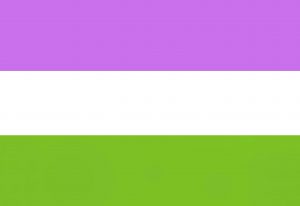
Genderqueer is an umbrella term for people who don’t exclusively identify with either the male or female gender. Lavender (a combination of the traditionally male and female colours blue and pink) represents androgyny, white represents agender identity and green represents non-binary.
Agender pride flag

Agender people don’t identify with any gender. This is symbolised in the agender pride flag with green representing non-binary and white, grey and black representing the absence of gender.
Ally flag
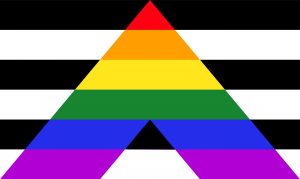
Allies are cisgender and heterosexual people who support the LGBTQ+ community. The ally flag is a combination of the rainbow flag and the straight flag (black and white stripes).
Also read: The 6 most common myths about bisexuality
Were you able to correctly identify all these pride flags? Let us know in a comment below!










Respond or ask a question
0 comments